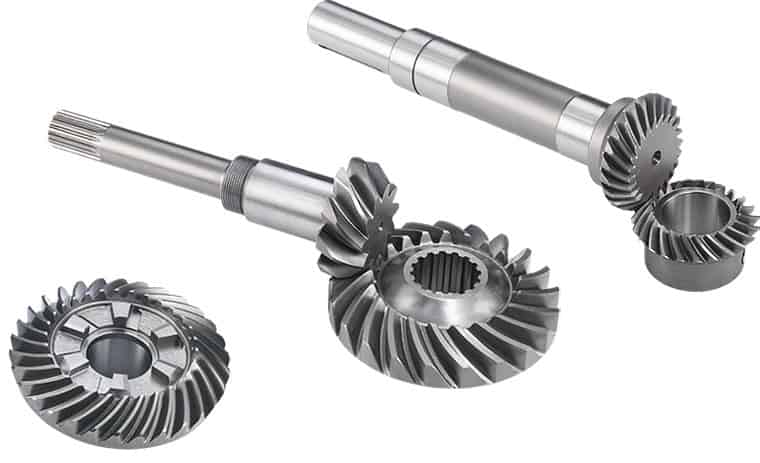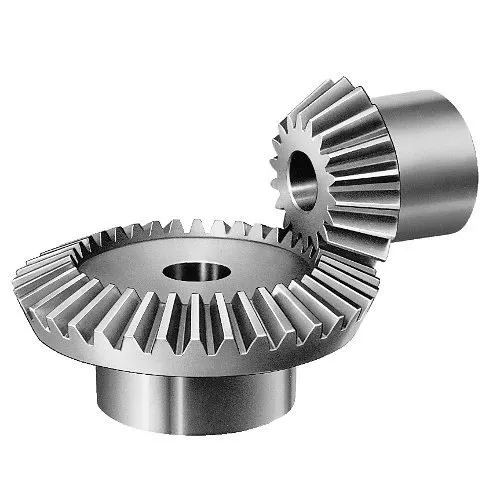Product Description
Miter Gear Bevel Spiral 90 Degree Forged Plastic Sintered Metal Stainless Screw Steel High quanlity Best Supplyer Pinion Spline Shaft Aluminum Screw Miter Gear
Miter gears are 1 type of bevel gears where the 2 rotational axes intersect. When speaking of narrow definition of bevel gears with ability to increase or decrease speed, miter gears do not have that ability due to the pair’s same number of teeth. Their purpose is limited to the change in transmission direction. Because they are a type of bevel gears, the basic characteristic of bevel gears exist such as presence of gear forms of straight cut, spiral cut and zerol types.
| Application: | Motor, Electric Cars, Motorcycle, Machinery, Marine, Toy, Agricultural Machinery, Car |
|---|---|
| Hardness: | Hardened Tooth Surface |
| Gear Position: | Internal Gear |
| Manufacturing Method: | Cast Gear |
| Toothed Portion Shape: | Worm Gear |
| Material: | Stainless Steel |
| Samples: |
US$ 9999/Piece
1 Piece(Min.Order) | |
|---|

Can miter gears be used in high-torque applications?
Miter gears can indeed be used in high-torque applications, although there are certain considerations to keep in mind. Here’s a detailed explanation:
Miter gears are capable of transmitting significant amounts of torque due to their tooth design and load distribution characteristics. The interlocking tooth design of miter gears allows for efficient torque transfer between mating gears, minimizing power loss. Additionally, the load distribution across multiple teeth helps to distribute the torque and reduce stress concentrations on individual teeth.
However, the suitability of miter gears for high-torque applications depends on several factors:
1. Tooth Design:
The tooth design of miter gears plays a crucial role in their torque-carrying capacity. Spiral bevel gears, with their curved teeth, are particularly well-suited for high-torque applications. The curved tooth profile allows for increased contact area and smoother engagement, resulting in improved torque transmission and higher load capacity compared to straight bevel gears.
2. Gear Material and Hardness:
The material and hardness of the miter gears are important considerations for high-torque applications. The gears should be made from materials with high strength and wear resistance, such as alloy steels. Proper heat treatment and surface hardening techniques can further enhance the gear’s ability to withstand high torque loads and minimize wear.
3. Lubrication and Cooling:
Effective lubrication is essential for high-torque applications to reduce friction and heat generation. Lubricants help to minimize wear and ensure smooth gear operation. In some cases, additional cooling mechanisms, such as forced-air or liquid cooling, may be required to dissipate heat generated during high-torque operation.
4. Gear Size and Diameter:
The size and diameter of the miter gears can impact their torque-carrying capacity. Larger gears generally have larger contact areas and can handle higher torques. However, it’s important to consider the available space and operating constraints when selecting the gear size.
5. Backlash Control:
Backlash, the clearance between mating teeth, can affect the smoothness and accuracy of torque transmission. In high-torque applications, maintaining proper backlash control becomes even more critical to prevent any unwanted movement or play that could impact performance and reliability.
By considering these factors, engineers can select miter gears that are suitable for high-torque applications. It’s important to consult gear manufacturers and design experts to ensure the gears are properly sized, designed, and manufactured to handle the specific torque requirements of the application.

What are the variations in miter gear designs and configurations?
Miter gears come in various designs and configurations to suit different application requirements. Here are some common variations:
1. Straight Bevel Gears:
Straight bevel gears are the most basic type of miter gears. They have straight teeth that are cut along the cone surface. Straight bevel gears are widely used and offer efficient power transmission, but they generate more noise and vibration compared to other designs.
2. Spiral Bevel Gears:
Spiral bevel gears have curved teeth that are cut in a spiral pattern along the cone surface. This design helps to reduce noise and vibration, improves load distribution, and provides smoother operation compared to straight bevel gears. Spiral bevel gears are commonly used in high-performance applications.
3. Zerol Bevel Gears:
Zerol bevel gears are similar to spiral bevel gears but have curved teeth with a spiral angle of zero degrees. This results in the teeth being parallel to the gear axis at the point of contact. Zerol bevel gears offer advantages such as reduced tooth thrust, improved tooth strength, and smoother meshing compared to other designs.
4. Hypoid Gears:
Hypoid gears are a variation of miter gears that have non-intersecting and offset axes. The axes of the gears do not intersect but are positioned at an angle to each other. Hypoid gears are commonly used in applications where high torque transmission is required, such as automotive differentials.
5. Skew Bevel Gears:
Skew bevel gears have teeth that are cut at an angle to the gear axis, resulting in a skewed or helical appearance. This design reduces noise, increases tooth contact area, and improves load distribution. Skew bevel gears are often used in applications where smooth and quiet operation is critical.
6. Offset Miter Gears:
Offset miter gears are used when the input and output shafts need to be offset from each other. They have specific tooth profiles to accommodate the offset arrangement while maintaining proper meshing and transmission of rotational motion. Offset miter gears are commonly found in machinery where space constraints or specific design requirements exist.
7. Customized Designs:
In addition to these variations, miter gears can be customized to meet specific application needs. This may involve modifications to the tooth profile, pitch angle, tooth size, or other parameters to optimize gear performance for a particular use case.
In summary, miter gears offer various design and configuration variations, including straight bevel gears, spiral bevel gears, zerol bevel gears, hypoid gears, skew bevel gears, offset miter gears, and customized designs. Each variation has unique characteristics that make it suitable for different applications, allowing for flexibility and adaptability in gear system design.

Can you explain the unique design of miter gear teeth?
The design of miter gear teeth is distinct and plays a crucial role in the functionality of these gears. Here’s a detailed explanation:
1. Tooth Shape:
Miter gear teeth have a straight shape, similar to spur gears. However, unlike spur gears where the teeth are parallel to the gear axis, miter gear teeth are cut at a right angle to the gear’s face. This allows the teeth to engage correctly when two miter gears mesh together at a 90-degree angle.
2. Equal Number of Teeth:
Miter gears have an equal number of teeth on both gears in a pair. This ensures proper meshing and smooth transmission of rotational motion between the gears. The equal number of teeth is essential for maintaining a constant speed ratio and preventing any slippage or irregular motion.
3. Conical Shape:
Another unique aspect of miter gear teeth is the conical shape of the gears themselves. The teeth are cut on the conical surface, which allows for proper engagement and transmission of motion between intersecting shafts. The conical shape ensures that the teeth mesh correctly, providing efficient power transmission at the desired angle.
4. Meshing at 90-Degree Angle:
Miter gears are designed to mesh at a 90-degree angle, allowing for power transmission between intersecting shafts. The teeth are specifically cut to facilitate this arrangement, ensuring that the gears engage smoothly and transmit rotational motion without any loss or disruption.
5. Tooth Contact and Load Distribution:
When miter gears mesh, the contact between the teeth occurs along a single line, known as the line of contact. This concentrated contact area enables effective load distribution and ensures that the gear teeth bear the transmitted torque evenly. Proper tooth contact is vital for minimizing wear and maintaining the longevity of the gears.
6. Lubrication and Noise Reduction:
The unique design of miter gear teeth can influence lubrication and noise levels. Adequate lubrication is essential to reduce friction and wear between the teeth during operation. Additionally, the straight tooth profile of miter gears tends to produce more noise compared to gears with helical or curved teeth. Proper lubrication and noise reduction measures are often employed to optimize the performance of miter gears.
In summary, the unique design of miter gear teeth includes their straight shape, equal number of teeth, conical shape of the gears, meshing at a 90-degree angle, tooth contact along a line, and considerations for lubrication and noise reduction. These design features ensure efficient power transmission, proper load distribution, and reliable operation in mechanical systems that utilize miter gears.


editor by CX 2023-10-08